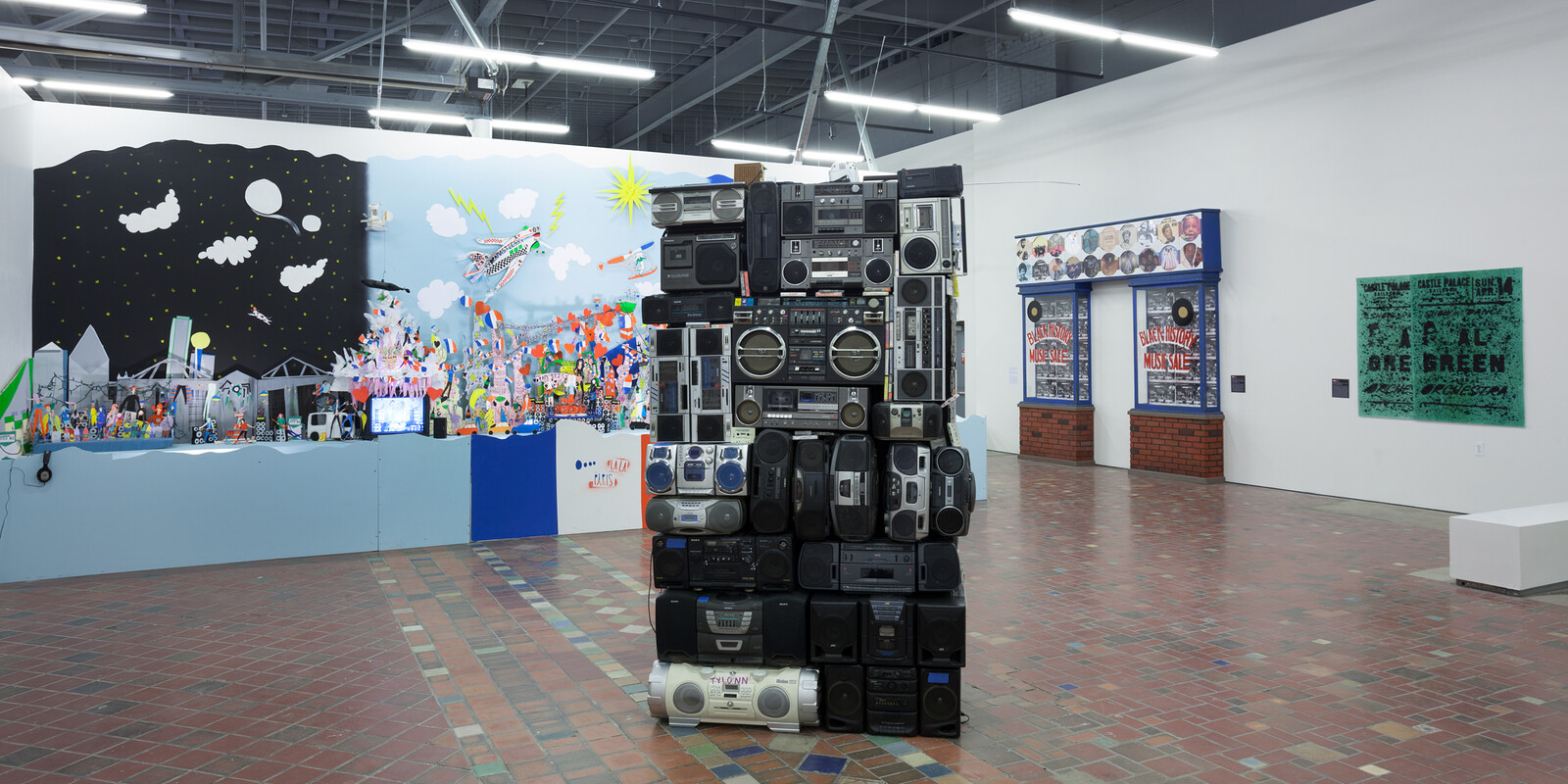Categories
Subjects
Authors
Artists
Venues
Locations
Calendar
Filter
Done
July 25, 2019 – Review
Nicolas Lobo’s "Wellness Center"
Rob Goyanes

Rather than the Belgian town of Spa, where, starting in the sixteenth century, the diseased and melancholic would drink chalybeate and engage in other watery therapies, I was in Detroit, sitting in SAUNA SHELF by Nicolas Lobo (all works 2019). The one-person octagonal sauna was encased in pink waterproof fabric, pulled taut and tie-dyed with black, marbled patterns. With deep breaths of the mist pumping in, my lungs and dermis chemically merged with the Vicks VapoRub and cuttings from the red cedar tree in the yard out front. This was the first recommended step in Lobo’s exhibition “Wellness Center,” located in the final project completed by artist Mike Kelley before his apparent suicide. Mobile Homestead (2006–13) is a replica of Kelley’s childhood home, a ranch-style house in the Detroit suburb of Westland. The full-size replica, which stands next to the parking lot of the Museum of Contemporary Art Detroit, is used for community gatherings, AA meetings, and exhibitions unrelated to Kelley and his work. As I sat in Lobo’s sauna, an artwork within a larger artwork, listening to the hum of a nearby fridge, my senses of public and private, wellness and not-so-wellness, started webbing together.
Half an hour later, …
January 5, 2018 – Review
“Sonic Rebellion: Music As Resistance”
Seth Kim-Cohen

“Sonic Rebellion” at the Museum of Contemporary Art Detroit offers two substantial proposals. First, it posits that the music of Detroit, ca. 1965–2000, was an active participant in the contemporaneous political and social struggles of the city, voicing and, in some cases, enacting resistance to the existing power structure. Second, it suggests that this conception of music and/as politics issues a call to the future, soliciting responses from contemporary artists including the well-known (Glenn Ligon, Juliana Huxtable, Cauleen Smith) and the somewhat lesser-known (Diamond Stingily, Ben Hall, Sterling Toles).
One leaves MOCAD feeling that the exhibition’s curator Jens Hoffmann is being deliberately coy about its theses. “Sonic Rebellion” presents historical artifacts and contemporary works, but not much context or information that would allow the spectator to engage with the show’s proposals. If, in fact, music participates in resistance, does it do so equally and by the same means, regardless of era, maker, genre, or issue? And what, precisely, is the relation of the historical artifacts in the exhibition to the contemporary artistic responses? Do the latter pay homage, revise, or amplify the positions and meanings of the former? The exhibition sidesteps such thorny questions and their thornier implications by adopting a …